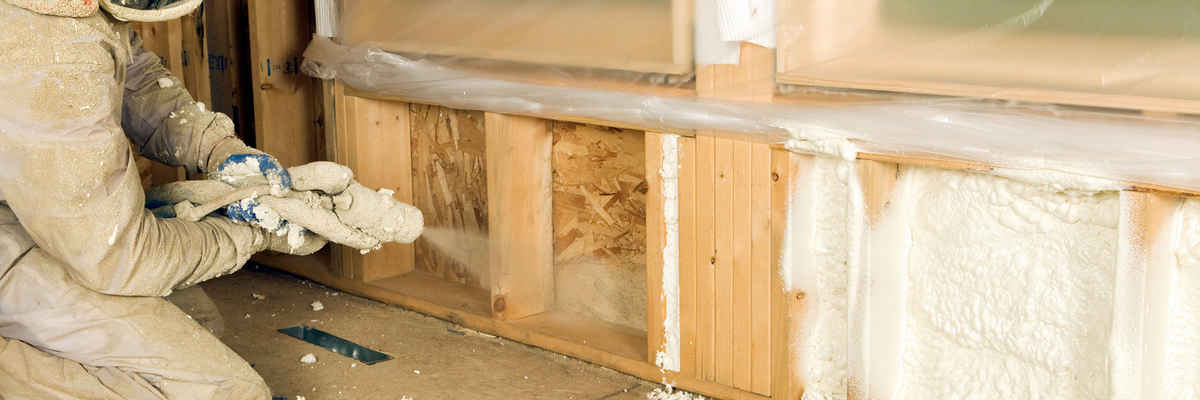What are the benefits of block foam insulation?
The benefits of block foam insulation are that, when using this method of insulation, the only part exposed on the outside is the insulation.
That means you can save up to 30% more energy on your heating and cooling bills per year by choosing block foam insulation! Block foam is not affected by humidity like fiberglass is. Fiberglass has an increased risk for mold growth when exposed to moisture because it's not vapor-permeable like block foam, which also helps save money with every pound spent - saving up to 30% in heating or cooling costs is HUGE too.
Fiberglass is vulnerable at higher temperatures; if exposed to temperatures above 115 degrees celsius (250 degrees Fahrenheit), the fibers will start resisting heat transfer and block foam insulation will continue to block it - block foam insulation is very good at protecting itself, which is another reason block foam insulation can save you up to 30% on your heating and cooling bills.
It saves money in the long run because it gives you more energy-saving possibilities. It's not affected by humidity like fiberglass so block foam can help keep moisture out of your house, therefore preventing mold growth - block foam offers all around better benefits than fiberglass!
Block Foam Benefits:
Permanent R value of R6 per inch compared to Fiberglass at R4 per inch. Longer lifespan than traditional forms of insulation. The composition allows for extraordinary protection against radiant heat transfer due to low emissivity ratings . Better for moisture control, block foam insulation does not absorb moisture from the air. Virtually no risk of mold growth on block foam insulation, unlike fiberglass which can be very vulnerable to it. Block foam has a higher insulating power than most other forms of insulation and is less likely to settle over time and lose its R-value.
Blocks dust and dirt better than traditional Fiberglass allowing block foam to stay cleaner longer resulting in less cleaning and maintenance requirements compared with block foam block. Due to block foams extreme durability it resists damage during construction activities such as cutting or drilling
Reduced utility bills using block foam due its inherent ability to reduce unwanted heat transmission by radiating heat away from your home instead of absorbing it. Less block foam insulation may be required for your project due to block foams high R-value.
Block foam is designed for use where Fiberglass can cause breathing problems, block foam will not cause any respiratory issues . It has very low health risk compared with traditional fiberglass insulation block
No matter what kind of block you are installing block foam doesn't absorb water or sag like other forms of traditional insulation. Block foam also doesn't retain moisture over time which means there is no need to worry about drying out the block foam before installation.
Call Now - (707) 562-0911
Get Your Free Quote!

How does block foam insulation work?
Foam insulation blocks work by reducing heat transfer in one of two ways- either by absorbing the heat present in the space outside the wall and slowing transferring it to interior space or conversely, by keeping cold air or other unheated spaces away from the heated room.
When foam insulation blocks are installed against combustible walls (also called "the exteriors"), they act as a secondary protection method that reduces the risk of fire damage. When installed on an interior wall, they help reduce drafts that help cool down rooms at night causing you to use your AC more. Foam works like baffled box beams, which means air can pass through without losing its effectiveness for thermal efficiency. Of course, block foam insulation blocks only do their trick if they are installed properly. A professional installer will seal your block foam insulation so you don't lose any of its effectiveness and they'll ensure the block is thick enough to insulate your home effectively. Be sure to ask about warranties when considering a contractor for block foam installation. Some offer lifetime warranties on the materials while others offer both limited and full-coverage block insulation warranty options depending on the block brand. All block foam insulation should be at least 1 1/2 inches thick which can reduce heat transfer up to 97%.
The low density polyurethane used in block foams have an R-value of between 5 - 8 per inch- nearly twice that of fiber glass and more than block wood or block concrete. Block foam insulation is inexpensive and easy to install, reducing the environmental impact of new construction while simultaneously saving your money on energy bills.
Block foam insulation works by trapping air within its cells, making it an excellent insulator for both hot and cold climates. It also won't compress over time like other conventional insulation materials such as fiberglass or cellulose, so block foam will retain its R-value for up to 50 years after installation- which means you'll be saving money long after the block was put in!
Call Us Now - (707) 562-0911
